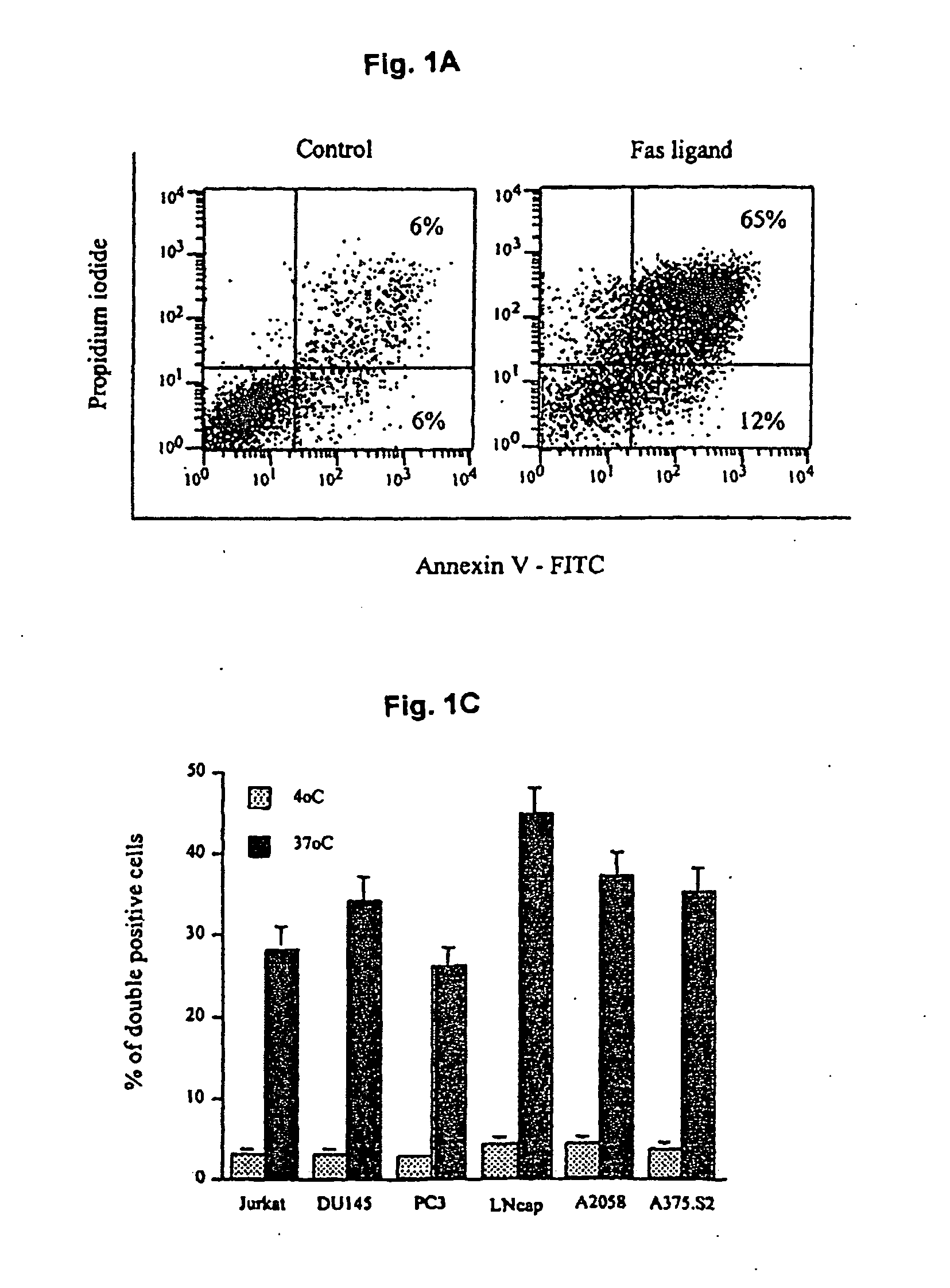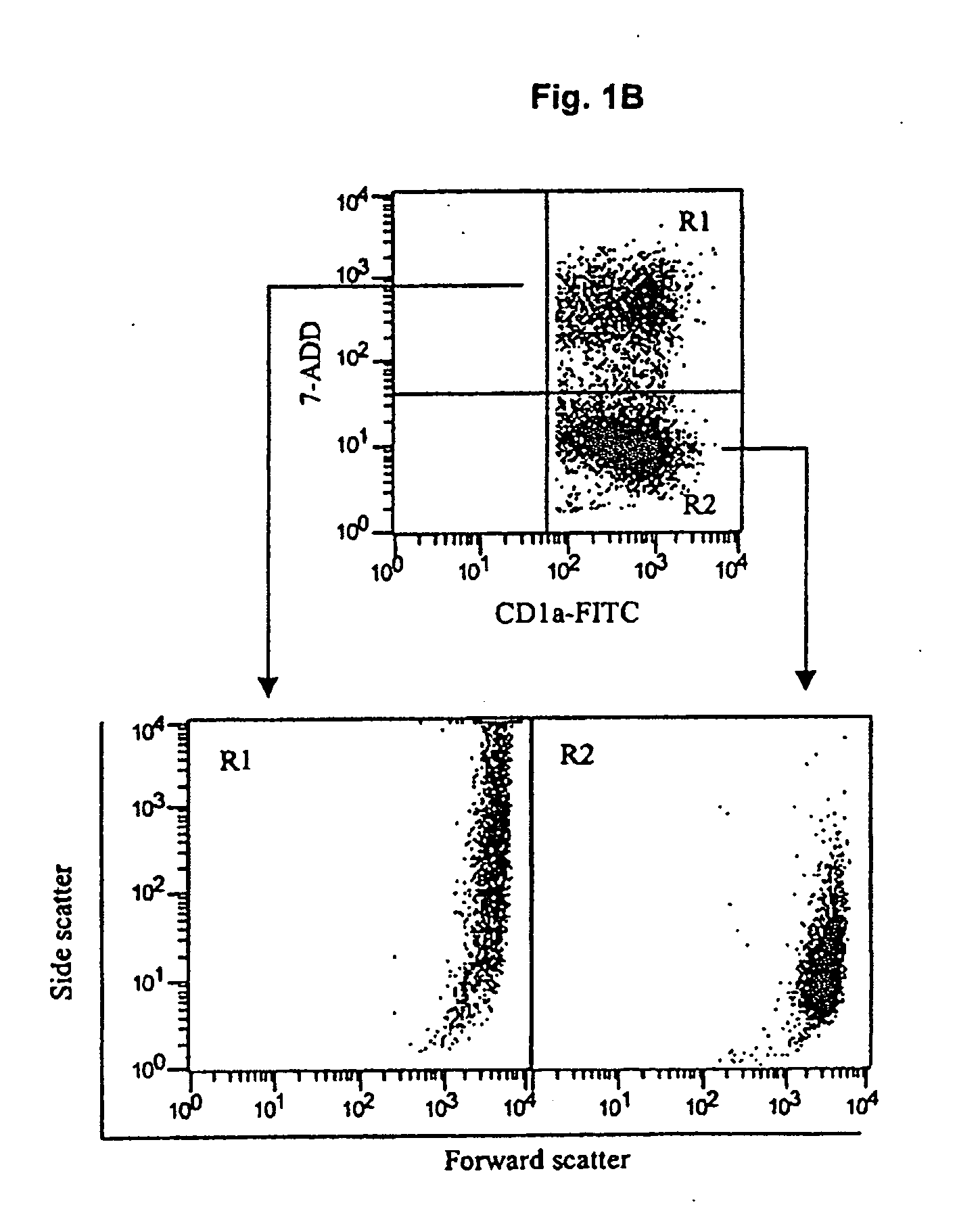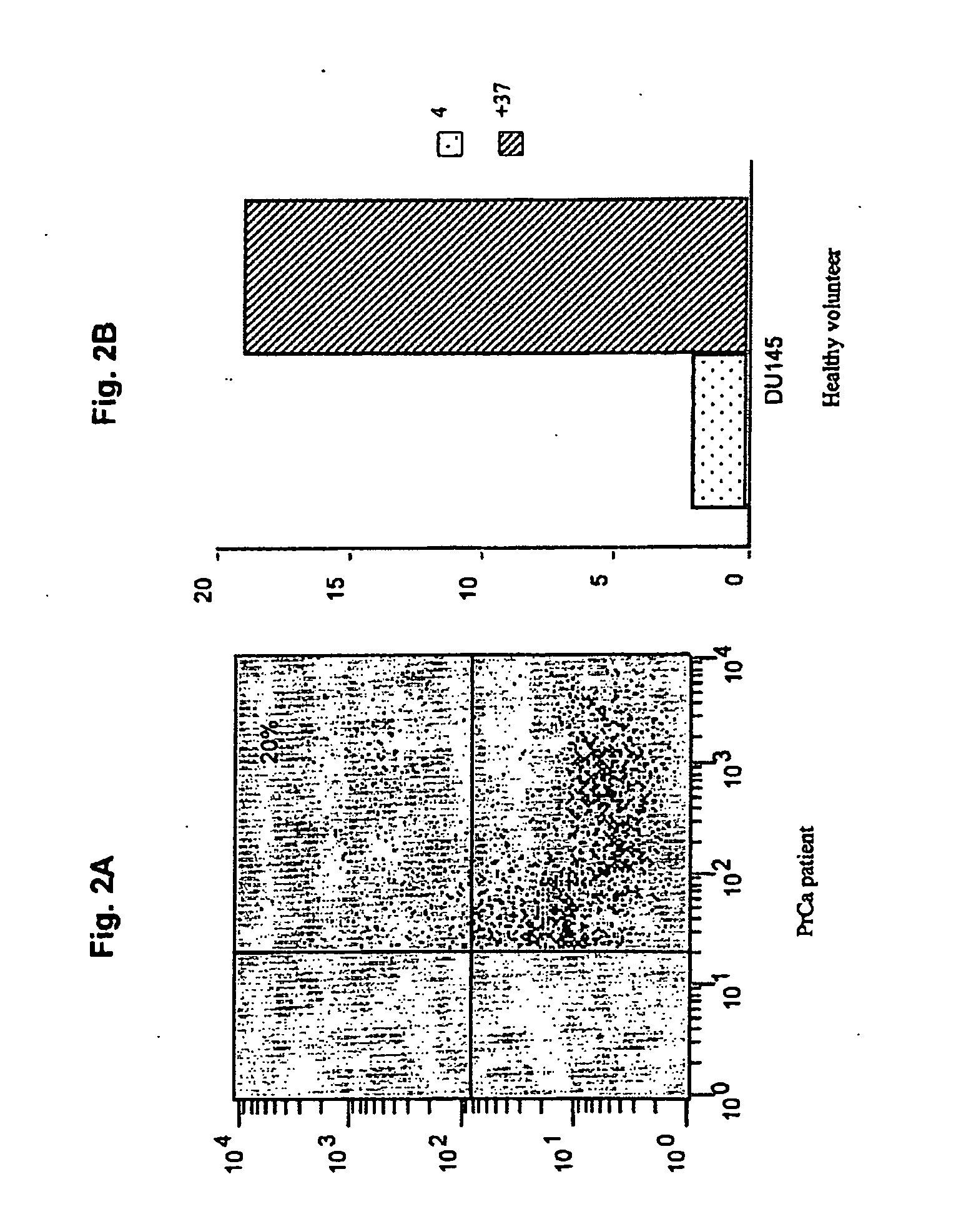Use of allogeneic cell lines to load antigen-presenting cells to elicit or eliminate immune responses
a technology of allogeneic cells and immune responses, applied in the field of engineering immunogenic cells, can solve the problems of limited number of well-defined tumor associated antigens, lack of evidence that known tumor associated antigens actually represent rejection antigens in vivo, etc., to reduce the rejection of grafts, reduce the number of activated cytotoxic cells, and reduce the effect of graft versus host diseas
- Summary
- Abstract
- Description
- Claims
- Application Information
AI Technical Summary
Benefits of technology
Problems solved by technology
Method used
Image
Examples
example 1
Induction of an Immune Response Against Prostate Cancer with DC Loaded with Allogeneic Tumor Cell Lines
[0059]Immature DC phagocytose dead or dying tumor cells: We determined that in vitro generated immature monocyte-derived DC (MDDC) were capable of capturing dead or dying tumor cells.
[0060]Immature monocyte-derived DC were generated from the adherent fraction of peripheral blood monocytes (PBMC) (Bender, et al. 1996. “Improved methods for the generation of dendritic cells from nonproliferating progenitors in human blood,” J Immunol Methods 196:121). PBMC from a healthy donor were suspended in complete media (CM) consisting of RPMI 1640, 1% L-Glutamine, 1% penicillin / Streptomycin, 50 μM 2-mercaptoethanol, 1% sodium pyruvate, 1% essential amino acids and heat-inactivated 10% fetal calf serum (FCS) (all from GIBCO BRL, Grand Island, N.Y). The cells were allowed to adhere to plastic dishes (Falcon 6-well plates from Bectin-Dickinson, Franklin Lakes, N.J.). After incubating for 2 hours ...
example 2
Induction of an Immune Response Against Melanoma with DC Loaded with Allogeneic Tumor Cell Lines
[0079]DC loaded with killed allogeneic melanoma cells primed naïve T cells to differentiate into CTLs that were specific for a broad spectrum of shared melanoma antigens and were able to kill melanoma cell lines.
[0080]Cell lines and induction of tumor cell death: The Colo829 and SkMe128 melanoma cell lines, K562, LnCAP prostate carcinoma cell line, 1806 breast cancer cell line (established by Drs. A. Gazdar and J. Minna at UTSW Medical Center at Dallas) and T2 cells were purchased from the American Type Culture Collection (ATCC; Manassas, Va.). The Me275 and Me290 cell lines were established at the Ludwig Cancer Institute in Lausanne. All cell lines were maintained in CM.
[0081]ME275 cell death was induced by treatment with 10 μg / ml of betulinic acid for 48 hours. Colo829 cells were killed by the same method, or by gamma irradiation (150 Gy and then cultured 48 hours in serum-free medium)....
example 3
Induction of an Immune Response Against Breast Cancer with DC Loaded with Allogeneic Breast Cancer Cell Lines
[0107]It has now been found that DC loaded with killed breast cancer cells can induce proliferation of autologous CD4 T cells. DC were first loaded with killed breast cancer cells, either sorted or enriched by differential centrifugation, and then cocultured at graded doses with 1×105 autologous CD4 T cells (purity>85%). Monocyte-derived DC and T cells were prepared as described in the Examples 1 and 2. Capture of killed breast cancer cells by immature DC was monitored by flow cytometry and Giemsa staining as described in the Examples 1 and 2. After 5 days of co-culture with T cells, tritiated thymidine (NEN, Boston, Mass.) was added to each well at the activity of 1 μCi / well. The plates were harvested 16 hours later (Wallac, Inc., Gaithersburg, Md.) and incorporated radioactivity was measured as described above. As shown in FIG. 15, the loaded DC induced T cells from healthy...
PUM
| Property | Measurement | Unit |
|---|---|---|
| concentration | aaaaa | aaaaa |
| volume | aaaaa | aaaaa |
| volume | aaaaa | aaaaa |
Abstract
Description
Claims
Application Information
 Login to View More
Login to View More - R&D
- Intellectual Property
- Life Sciences
- Materials
- Tech Scout
- Unparalleled Data Quality
- Higher Quality Content
- 60% Fewer Hallucinations
Browse by: Latest US Patents, China's latest patents, Technical Efficacy Thesaurus, Application Domain, Technology Topic, Popular Technical Reports.
© 2025 PatSnap. All rights reserved.Legal|Privacy policy|Modern Slavery Act Transparency Statement|Sitemap|About US| Contact US: help@patsnap.com



